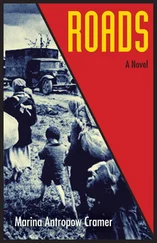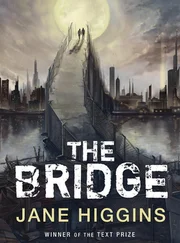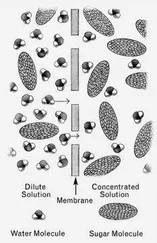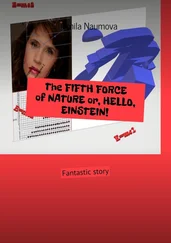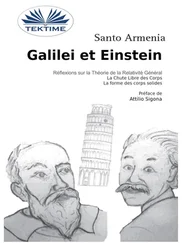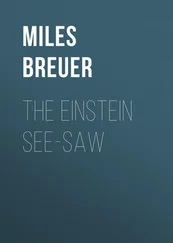Jake made a dismissive motion with his hands, a gesture that one might use to send away a servant. George rolled the remote back up the aisle and positioned it next to Wolfgang’s seat. Jake could be such a jerk sometimes, he thought.
Jake peered at his notes. “The next speaker,” he announced, “is Pierre Barbotin, who is in Nantes at the moment. Pierre will tell us about the performance of the straw tubes.”
Wolfgang looked at George’s remote inquiringly.
“Welcome to the LEM collaboration,” George whispered.
ALICE PRESSED DOWN THE DICTATION BAR AND HELD the recorder near her mouth, speaking loud enough to be audible over the car noise. She held the steering wheel steady with her other hand. “PARAGRAPH,” she said to the recorder.
“The heifer edged down the slope and into the ravine, loose clods dislodged by her hooves tumbling down the slope ahead of her. Then she trotted to the place she had seen from above, a spot where tall grass grew in the shade of the overhang. Ignoring the unfamiliar musky smell that permeated this place, she began to crop the lush grass. It was good, and she ate it contentedly.
PARAGRAPH
“There was a dry rustling noise behind her. She turned a wide brown eye toward the sound. A large insectoid head was framed by a shadowed hole in the wall of dirt, sharp pincers extending toward her hindquarters. She uttered a high shriek of primal fear and moved. But it was too late, as she felt the cruel pincers grip her shank.
Alice paused and released the dictation bar, placing the small recorder on the seat beside her. Should it be “primal fear” or “primordial fear”? The trouble with trying to write while you were driving was that it was just you and the recorder, with none of the electronic aids of a writing workstation available. The scene she was working on was not going well. It sounded too much like a B-grade horror movie. Perhaps she should work on the plot continuity and save the scene writing for later, when she could run the recording through her workstation’s speech-to-text program and have what she had dictated directly on the screen in front of her.
Through the windshield she could see that she was approaching the state boundary, as denoted by state-shaped concrete monuments and large signs beside the highway. Alabama was giving way to Louisiana, white oak and hawthorne woods to palmetto wetlands. YOU ARE LEAVING ALABAMA, THE HEART OF DIXIE. YALL COME BACK AND SEE US REAL SOON! AND WELCOME TO LOUISIANA, THE PELICAN STATE. CALL 1-800-33-GUMBO FOR TOURIST INFORMATION.
Alice considered picking up her cellular phone and doing just that, but raised the small recorder instead and squeezed. “NEW PAGE,” she said. “HEADING Plot line for UNDERSCORE Fire UNDERSCORE Ants; SUBHEADING Problems.” She relaxed her grip on the record bar, took a deep breath, and thought about the many problems with her plot so far. The basic idea was that the fire ants burrow into the SSC tunnels, are exposed to radiation, and mutate into giant ants that attack the countryside. Her research had turned up a few problems with this plot concept.
First, the mobile ants, the one that were likely to be exposed to radiation, were workers. The queens and drones, the ones who reproduced and were the ones that mattered genetically, tended to stay in the anthill except for a brief trip to the outside world for a mating flight. She would have to have some special scenario that exposed a queen or drone to radiation. A queen would be better, she decided. She pressed the record bar and spoke. “BREAK Problem COLON Radiation exposure BREAK Find a way to expose a queen to radiation.”
The depth of the SSC tunnel would also be a problem. The accelerator and the radiation that went with it were buried in a tunnel as deep underground as a thirty-story office building is high. Ants never burrow more than a few feet below the surface. How were they supposed to get down to where the radiation was? She pressed the record bar again. “BREAK Problem COLON Depth in ground BREAK How does queen get down to radiation? QUESTION, BREAK Elevator? QUESTION,” she said.
Another problem was that ants, and insects in general, were not very susceptible to radiation-induced mutations. Irradiated animals almost always died or became sterile instead of producing mutated offspring. A particle has to break both sides of just the right DNA strand in the same place and the broken ends have to oxidize before they rejoin, a Florida State University biologist had told her, and that was very unlikely. If you really wanted mutations, he’d said, it was far easier to produce them with certain organic chemicals than with radiation.
When she thought about it, however, this wasn’t a problem for her novel. Her readers believed that radiation easily produces mutations — everyone knew it was true. So even if it wasn’t, it didn’t really matter, at least for the purposes of her novel. She felt a guilt twinge and pushed it aside. She was writing a book to be read for entertainment, not a textbook.
She was approaching a tall advertising sign featuring a giant hot dog that was mounted atop a fast-food place near the upcoming freeway exit on the right. Giantism was a similar kind of problem. If you took a creature like an ant and made it bigger, its weight increased faster than its strength did, and its breathing and metabolism also got out of whack. The biologist had tried to explain it by talking about surfaces and volumes and scaling laws, but she hadn’t really followed the details. However, his conclusion was clear. Scientifically speaking, you couldn’t make a big ant by, say, boosting the quantity of growth hormone in a small ant. Even if it magically grew to the desired size, it wouldn’t be able to stand up and would probably die on the spot.
However, this probably wasn’t a problem, either. There had been innumerable sci-fi movies and books about giant insects, so her readers knew that giant ants were possible, and they wouldn’t be dissuaded by the quibbling of a few scientists.
Alice put the recorder back on the seat, considering what she should do next. Perhaps she should dial 1-800-33-GUMBO and ask what they knew about giant mutant fire ants.
GEORGE PUT THE BRIEFCASE DOWN ON HIS DESK AND walked to the window of his office in the physics-astronomy building. Beyond the south campus of the University of Washington he could see the morning boat traffic on the Montlake Cut waterway. Farther on, the Roosevelt Bridge connecting the northern and southern halves of Seattle across the Ship Canal stood erect as a two-masted schooner and three smaller boats moved westward under it in the direction of Puget Sound. It was a clear day, and there was a nice breeze from the northwest. Ideal weather for a bit of sailing, he decided.
George thought of his neglected sailboat, tied up over at Shilshole Marina, ready to take him out to the beautiful hidden coves and island beaches of the Sound. He sighed. Not today, too much to do. He glanced at his watch. It was 8:45. There was enough time for a little virtual excursion before he had to prepare the graphics for his 10:30 class. This was his first opportunity to have a closer look at the new results from the radiation damage tests.
He walked across his office to the Swedish black leather recliner next to the tall bookshelf. The recliner, which he used for teleoperation, was his own. It was quite comfortable, unlike the standard university issue.
Switching on the graphics processor, George lifted the data cuffs from the wire-mesh bin beside the recliner. He put on the flesh-colored bands that always reminded him of the wrist weights used for exercise. With duly cuffed hands he lifted the magic glasses to his eyes and adjusted them for a snug fit at the nose and temples. Unlike those he had used on the airplane, these were the “full-view” model that resembled wraparound sunglasses. They fitted tightly against his forehead, cheeks, and temples. The glasses were in transparent mode, and he had a clear view of the room.
Читать дальше

